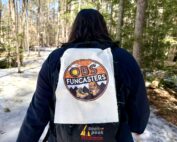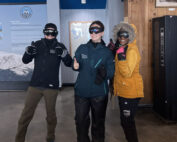Intern Research
2013-06-09 15:45:29.000 – Alex Carne, Summit Intern
NULL
Mount Washington’s extreme climate has made it a prime location for meteorological research. Much of the research that is conducted by the observatory is performed by interns in the form of research projects. Every season, the interns of the observatory are assigned a new research project aimed at discovering new details about the weather and climate of Mount Washington.
The project that I have been assigned compares the relationship between the climate and avalanche history of Tuckerman Ravine (Tucks). There is no weather station in Tucks that can directly measure the weather conditions, so there is a lot that remains unknown about the climate. The two closest weather stations to the ravine are at the Observatory and an automated weather station at the Hermit Lake shelters near the bottom of the ravine. In order to get a better idea of Tuck’s climate, I am comparing the climate data of the Observatory to the climate data of the Hermit Lake station in an attempt to find correlations in the data between the two stations. By the end of the summer, my goal is to have developed a better understanding of the climate of Tuckerman ravine. In addition, I hope that the data that I collect will provide more detail about the weather conditions in Tucks that lead to avalanches.
Alex Carne, Summit Intern
Team Flags Return for Seek the Peak’s 25th Anniversary
Team Flags Return for Seek the Peak's 25th Anniversary By MWOBS Staff Mount Washington Observatory is looking forward to continuing a much-loved tradition for Seek the Peak’s 25th Anniversary: Team flags. In inviting teams
Meet Summer Interns Zakiya, Max and Maddie
Meet Summer Interns Zakiya, Max and Maddie By MWOBS Staff We are excited to welcome six teammates to the summit of Mount Washington this summer! During their internship, these students and graduates will play
Saying Goodbye to the Summit
Saying Goodbye to the Summit By Alexis George After an extraordinary last three years working as a Weather Observer and Meteorologist, I am excited to pursue a different career. As sad I as am




